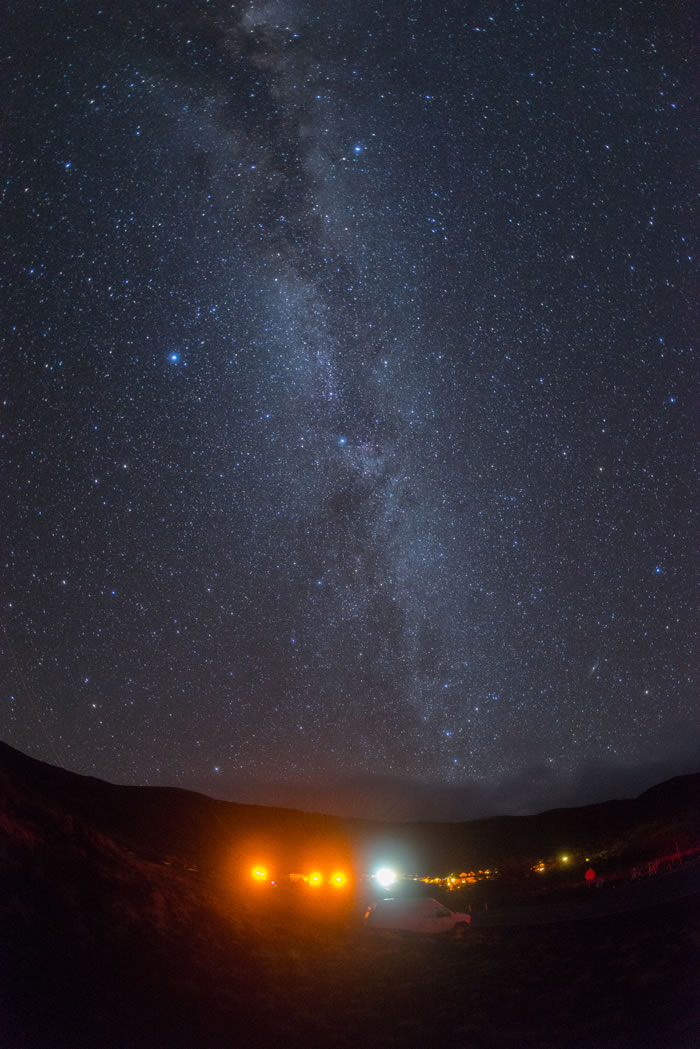Looking up at the Tanabata stars from Hawai’i
Night Scape Photograph・

| Date | 11:02 pm August 10, 2013 |
|---|---|
| Camera | Nikon D600 |
| Lends | 15 mm F2.8 EX DG DIAGONAL FISHEYE |
| Exposure | f/2.8、30 seconds、ISO 3200 |
| Location | Onizuka Center for International Astronomy Visitor Information Station on Mauna Kea , Hawai’i Island |
| Photographer | Shogo Nagayama |
| Copyright | National Astronomical Observatory of Japan |
The splendid Milky Way rising up in a dark sky unaffected by the light from cities. This is the magnificent night sky seen from the midway point of Mauna Kea on Hawai’i Island, where observatories from around the world, including the Subaru Telescope, have gathered. The three stars shining brightly at the top of the picture are the Great Summer Triangle. But they look different from when they are seen from Japan. That is because this is the northern sky. Also the “Tanabata* stars,” which are south of the zenith when seen from Japan, extend to the north from overhead when seen from Hawai’i with its low latitude near the Equator. They appear in the opposite side of the sky as you look up at them.
The North Star as Seen from 20 Degrees North Latitude
This single shot captures the northern sky seen from Mauna Kea. The star shining just above the mountain ridge, a little to the left of center, is the North Star. In Hawai’i, which is close to 20 degrees North Latitude, the North Star appears very low compared to where it is seen from Japan. A little to the right of center, also almost touching the horizon and just above the clouds lining the ridge, the constellation Cassiopeia can be seen in the cascade of the Milky Way.
A Different Face of the Great Summer Triangle than is Seen from Japan
Looking up, in the flowing Milky Way, you find Deneb in the constellation Cygnus in the center of the image. To the left, on the west side of the Milky Way, the remarkably bright start is Vega in the constellation Lyra. In Hawai’i, Altair in the constellation Aquila, which is seen in the southern sky from Japan, shines almost directly overhead. The very familiar stars important to Tanabata look strange when seen in a different part of the sky.
The Season when the Tanabata Stars can be Seen
In the modern calendar there are many places where the summer rains haven’t cleared by July 7. It is a season ill-suited for star viewing. In the calendar used in Japan until the Meiji Era, the 7th day of the 7th month fell in what is now August. Since 2001, NAOJ has hosted a “Traditional Tanabata” event to introduce the night sky near the 7th day of the 7th month according to the old calendar. In 2014, this will be held on August 2.
Author: Seiichiro Naito (NAOJ Public Relations Center)
(*Translator’s Note: Tanabata, literally “seven-seven,” is a traditional festival in Japan to celebrate the mythological romance between the starts Vega and Altair.)